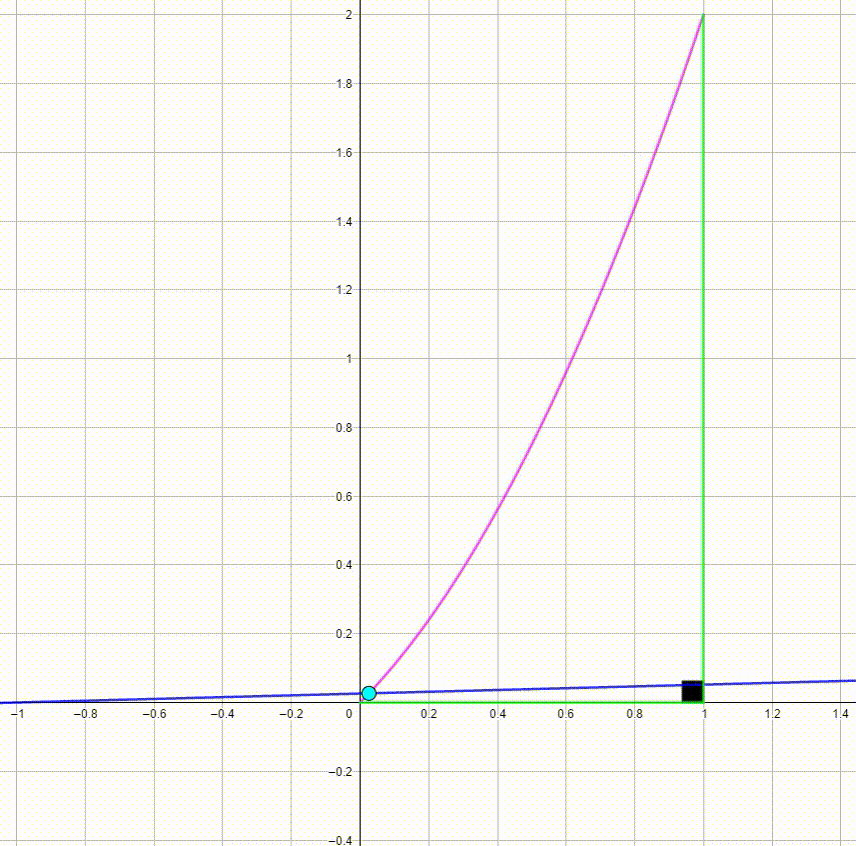Dynamic Geometry: P1

The diagram shows a blue line y = a x + a and a cyan point P ( a ; y p ) with 0 ≤ a ≤ 1 . As a varies from 0 to 1 and back from 1 to 0 , the cyan point moves along a pink curve. The black angle between the two green lines is a right angle. The area bounded by the pink curve and the green lines can be expressed as c b where b , and c are coprime positive integers. Find 2 ( c − b ) .
The answer is 2.
This section requires Javascript.
You are seeing this because something didn't load right. We suggest you, (a) try
refreshing the page, (b) enabling javascript if it is disabled on your browser and,
finally, (c)
loading the
non-javascript version of this page
. We're sorry about the hassle.
1 solution
There is one thing that confuses me: I thought that in the question y = a x + a instead of a x + α , so we don’t need to find the relationship between a and α , do we?
Or is it because of the question being edited?
Log in to reply
Hi, the slope of the line and its y intercept are the same and i called it "a", that's it.
@Valentin Duringer ,could you collect the link of all these dynamic geometry questions into a note? I’d like to include it to my RadMaths note :)
Log in to reply
How do I do this? I have never done it before... ;)
Log in to reply
You could create a discussion :) in the discussion use format [ text ] ( link ) without the spaces to link the questions :)
Never mind I’ll do that :)
Log in to reply
@Jeff Giff – Cool, just one quick note, i'm about the post 100 problems in the series, I already created them.
@Jeff Giff Thanks for pointing that out. I may have misread an 'a' as an 'α', not sure! It is 'a' now, which is best anyway. I edited the solution accordingly, to avoid any further confusion. Took the chance to edit other parts too.
The point P on the line y = a x + a has a as its x-coordinate and therefore y p = a 2 + a . The pink curve is (part of) the parabola with equation y = x 2 + x .
The area under the curve is found by evaluating the antiderivative: A = ∫ 0 1 ( x 2 + x ) d x = 3 1 x 3 + 2 1 x 2 ∣ ∣ ∣ ∣ 0 1 = ( 3 1 + 2 1 ) − ( 0 + 0 ) = 6 5
The requested answer is 2 ( 6 − 5 ) = 2